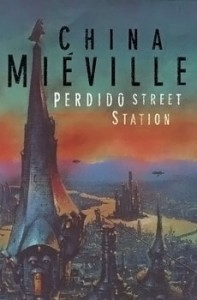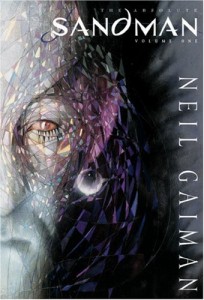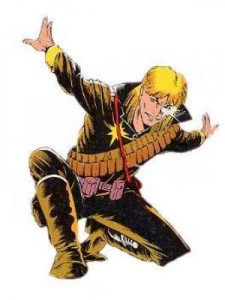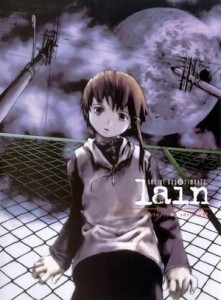Mr. Media Chastity Belt vs. Hollywood
The heat wave brought revelations.
Roger Ebert boldly declared that video games “could never be art” which created a great digital fracas.
M. Night Shyamalon defended his underwhelming and frustrating interpretation of Avatar: The Last Airbender as “an art form…a sacred process.”
Ken Levine, Big Daddy if Irrational Games, penned a rousing epistle to the gaming community in Game Informer, encouraging them to “Grow a Pair” and be proud of video games as video games.
Fireworks went off in my head, just like Bobby Brady.
Why did I put movies on such a pedestal and want my favorite cartoon series, Avatar, to become a movie trilogy? Because I did, and I do, over and over again. I’m taking myself behind the woodshed about this little issue.
Keith, you’re a jerk about being excited for everything you enjoy to become a movie, like that’s some sort of great creative validation. You heard BioShock was in the making for a movie and you got excited. Really? Do you think a movie could do justice to the feeling of a Big Daddy’s basso groan in your chest as you turn the controller, knowing you have only a single Electro Plasma and a few shotgun blasts left? You heard Avatar was in the making for a movie and you geeked out for days. Then your favorite character (Sokka) lacked your favorite quality (humor). Remember Ang Lee, Director of Sense and Sensibility’s, The Hulk? Do you?! What was so wrong with Peter David’s The Hulk? He wrote the bejeezus out of that comic for years.
Well, that’s it. I’m drawing a line around some of my favorite stories. I’m protecting them, like pure, virginal flowers, from the defilement of Hollywood films. Just call me Mr. Media Chastity Belt. It’s time for me to stop believing that one form of media has some greater value over the others simply because it has deeper pockets and a wider audience than the others.
Here’s my list of protected creative species, be warned, Hollywood.
Libros Libertas
“The worth of a book is to be measured by what you can carry away from it.”
-James Bryce, British Historian & Viscount
 Perdido Street Station by China Miéville
Perdido Street Station by China Miéville
This story is more than a Steampunk flavored, Naked Lunch influenced, magical acid trip. Though, at some points, it does feel like that. Perdido Street Station plays with the concepts of Industrialization, Socialization, Drug Addiction, Crime, Punishment, and Redemption while measuring a consistent dose of the danger of scientific pursuit. Aside from the fact that some of the characters are essentially roach headed naked women and I wouldn’t want to see that on the big screen, Perdido Street’s narrative tone, Miéville’s intense description and the simple weight of the prose all help build the novel’s dark Victorian world. The reader is then forced to confront the profane construction which squats in their imagination, thus littering the profane with personal imagery. Lacking that—and the ability to come up for air by putting the book down—Perdido Street Station would become less in the translation to film.
Zen and the Art of Motorcycle Maintenance by Robert M. Pirsig
In short, Hollywood would screw this up. Pirsig’s novel is intended to be rolled on the cerebral palate, masticated slowly in the teeth of cognition, then swallowed for the soul’s digestion. I fear that Hollywood would mutter, “Great. Let’s do it in 75 minutes. And there’s motorcycles, right? Can that big guy from American Chopper make a cameo?” The book chronicles one man’s fictitious journey across the US with his son, but is actually a philosophical journey into the form and function of “quality” in our personal lives. The prose must be at least three fifths narrative introspection. Though the book is beloved, and the movie would surely be marketable, its essence would be lost.
Comic Book Crusade
“I think comics have far more potential than a lot of people realize.”
-Harvey Pekar, Comic Book Writer
 The Sandman by Neil Gaiman
The Sandman by Neil Gaiman
The Sandman comic series (in graphic novel form) is one of an extremely short list of comics to make it on the New York Times Best Seller List. It shares that honor with Watchmen and Dark Knight Returns. Can you hear Hollywood panting on its neck already? Yet The Sandman differs from its celluloid siblings in one substantial way: They stand alone as stories while the Dream King’s tale twists, flows and spreads through seven years of comics. This isn’t counting the twenty spin offs. Why not just tell the main story of Dream’s seventy year imprisonment and attempt to rebuild the kingdom after his escape? Because the story is so large, and so fanciful that it would be a dishonor to attempt to chop or water it down into Hollywood size and flavor. Yes, even with CGI.
rebuild the kingdom after his escape? Because the story is so large, and so fanciful that it would be a dishonor to attempt to chop or water it down into Hollywood size and flavor. Yes, even with CGI.
Longshot by Ann Nocenti
Anyone who knows the last twenty years of the X-Men knows Longshot. He had the power of favored luck, if his motives were pure, an innocent heart and an acrobatic flair. Yes, and a mullet. He came from a world which was ruled by TV and run by bloated, carnivorously voyeuristic, cybernetically lazy creatures. Longshot should never be a movie because the essential theme of Longshot, according to Nocenti, is to jab a finger into the eye of America’s exploitive, voyeuristic and lazy media culture, and to exploit that for the big screen would run counter to a great deal of the graphic novel’s themes.
Animated Antagonism
“Cartooning at its best is a fine art.”
-Ralph Bakshi, Cartoonist
 Serial Experiments Lain by Ryutaro Nakamura (Director) and Chiaki J. Konaka (Writer)
Serial Experiments Lain by Ryutaro Nakamura (Director) and Chiaki J. Konaka (Writer)
Lain is an animae experience. For some people it is not a fully pleasant or comprehendible experience, but it was a winner for me. Lain is relevant to modern society, as a study of technology, communication and the existence of personal reality in an ever increasing digitally networked world. Lain would fail as a film because it relied on stylistic animation, episodic structure and an eerie color palette to convey the deeply layered and complex story of a young girls journey to “abandon the flesh” for the digital realm. Hollywood would need many rewrites to churn this complex techno-fantasy into something popcorn friendly and in the end we’d have, at best, an artistic Hackers 3.
Howl’s Moving Castle by Hayao Miyazaki (Director) and Diana Wynne Jones (Writer)
Fine. Disney and Chris Columbus might be able to turn this Japanese animated movie into live action. If they stuck to the essential plot of Sophie meeting the wizard Howl, being turned into an old woman, having a magical adventure through a war torn land and eventually living happily ever after, though forever changed. Yet, returning to the crux of my frustration with myself, there’s no need. Howl’s is perfectly balanced in its current form. Its less believable elements become believable in animae form. Its romance and war retain their gravity. Never would we have to fear that the young-girl-turned-old plot would become a Mrs. Doubtfire or Big Momma style caricature of age and prosthetics.
The Line Is Drawn
I don’t hate movies. I don’t hate Hollywood. Iron Man ruled, as I once said. What I hate is my naive excitement every time that I hear something I love is slated for a film deal because most works don’t survive the transition intact or improved. Maybe I’m alone in this, but I doubt it. Use the comment box to let me know if I am alone in this, or if you disagree with my protected six works, or if you love a work which should be protected in its original form—for there are many more.
Part of growing as a person, and helping other people to do so, is self-acceptance and discovering self-worth. Ken Levine urged video gamers to accept the intrinsic value of their medium as it is. I’m urging myself to do the same with these six personal paragons of their media.
I’m also urging Hollywood to do the same. Hollywood, a movie that is based on a work which existed in another medium will always be compared to it. Be proud of what you are. Be original. Be individual. A thing of beauty in its purest form is the most compelling of creations.
K


